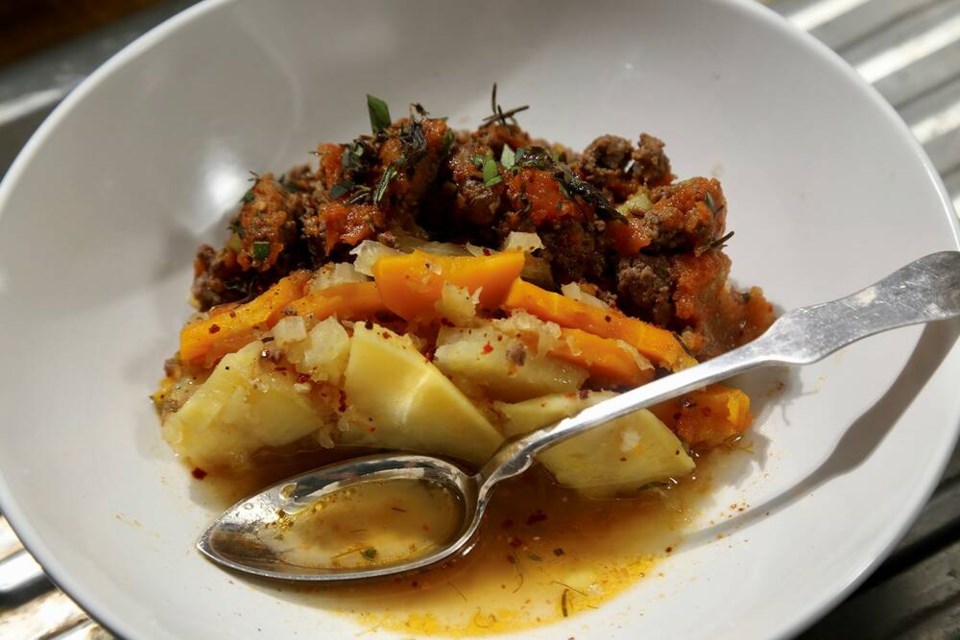For most of us, a paradigm shift in values and lifestyle is required if we are to assume responsibility for the health of our bodies and minds. I have spent years re-educating myself, re-prioritizing my time and, most importantly, believing that what I now know to be true about our food system places a burden of responsibility on me to spend more time doing and less time conveniencing.
It has taken the industrial food system three generations to convince us that convenience is good for us. Indeed, when the “freedom from the kitchen” movement began after the Second World War, it created a positive and much-needed momentum that led ultimately, to great strides in equality between the sexes, allowing homemakers to opt for paid vocations and greater freedom of choice.
Somewhere along the line, however, good intentions became bad practice, and today we are consuming far too much processed and convenience foods high in unhealthy fats, simple carbohydrates, refined sugar and salt, and low in nutrition.
Happily, we can take back control of our health and still enjoy convenience in the kitchen, if we go back in time somewhat and re-write some vintage fast-food recipes using current science and accurate information about how processed foods affect our health.
This week I revisited some fun, old, time-saving comfort food recipe booklets from the ’50s and ’60s, and challenged myself to swap out the old for the new.
I started with 75-per-cent plants (preferably local and organic) and 25-per-cent pasture-raised protein (preferably 100-per-cent grass-fed and finished), used only healthy fat heated to temperatures below 163 C, and then optimized preparation and cooking to use as few cooking methods and pots as possible, to save time.
Two dishes that caught my attention were the iconic pork chops smothered with canned mushroom soup gravy, and a layered hamburger-meat casserole held together by canned tomato soup. The pork chop dish was a bit too meat-centric for the quantity of mushrooms and produce than I had on-hand, so I opted for the casserole.
The original recipe, from the 1950s, featured layers of white potato, celery, ground beef and highly processed canned tomato soup, simmered together in a 350 F oven. My updated version featured a vastly more nutrient-dense palette of sweet potato, yellow onion, garlic, fennel bulb and greens, carrots, 100-per-cent grass-fed and finished bison, and a pureed quart of gorgeous peachy-tasting beefsteak tomatoes that I hot-water processed in glass jars myself, in small batches this summer.
A glug of extra virgin olive oil swept around the sides and bottom of the enamelled casserole dish kept ingredients from sticking. A soup spoon full of home-made steak spice plus another of plump and juicy sweet fennel seeds (harvested before, kept frozen for handy use) mixed into the bison, kicked things up more than a notch. A flourish of sea salt with chopped fresh oregano and thyme comprised the final phyto-nutrient layer.
The whole dish took about 15 minutes to prepare and assemble in satisfying strata, before simmering away under cover in the oven for almost two hours. After resting, covered, for about 20 minutes, I spooned the layers into shallow bowls, allowing the fragrant tomato water broth to settle naturally for sipping with a spoon.
I did not recipe-test, or measure as I went. I used what was handy from our small garden, or purchased from organic sources that I trust. The casserole was inexpensive, beautiful, restaurant-worthy, uncommonly delicious and immensely nutritious. Most definitely it was convenient, leaving me plenty of time to do something else, or nothing at all.
Laura Marie Neubert is a West Vancouver-based urban permaculture designer. Follow her on Instagram @upfrontandbeautiful, learn more about permaculture by visiting her Upfront & Beautiful website or email your questions to her here.
For a taste of permaculture, watch the video below:




